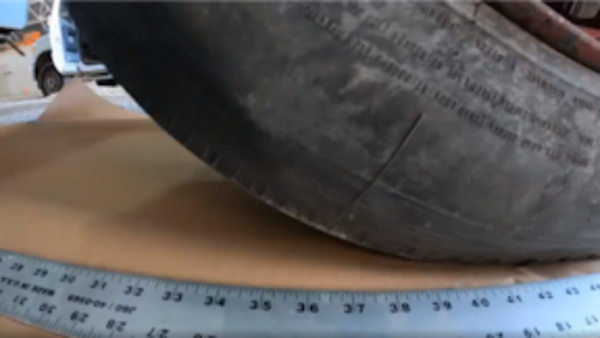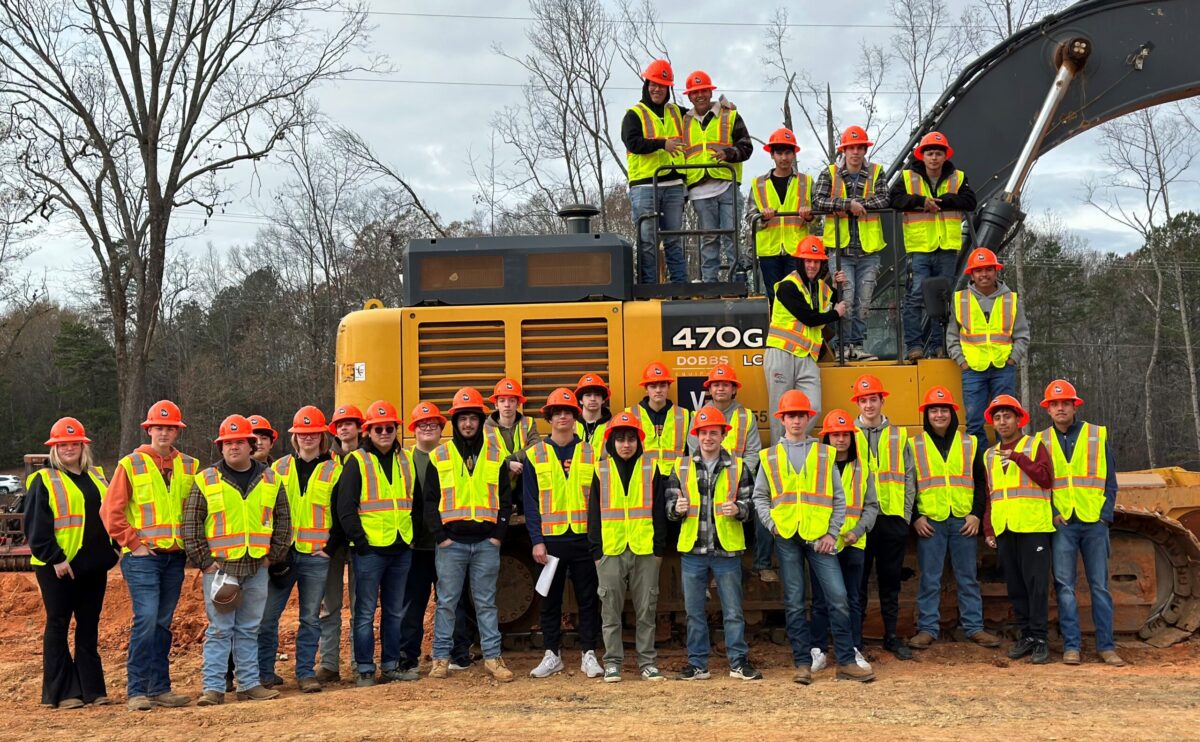
by John Schneidawind, vice president of public affairs, ARTBA
Each day on major highway projects, construction engineers wrestle with a common challenge—how to keep a road stable while heavy trucks and machines roll over it.
This task is especially daunting during the actual building of a road, when heavy equipment may have to traverse over soft, unstable soil to get to the next area of a paving project. “Applied mechanical stabilization,” or the improved ability of a road to tolerate the weight of heavy-duty trucks hauling concrete and asphalt without buckling, is crucial to completing projects on time and within budget.
There are several techniques to achieve this stability in roadway construction. Tensar, the Alpharetta, Ga.-based division of CMC, is pioneering a unique approach it says gives road builders a more accurate picture of the stress and pressure a dirt road undergoes while providing a path to a construction site.
As Tensar defines it in a white paper entitled “The Lees Approach to Applied Mechanical Stabilization,” unpaved roads are those constructed of a layer of unbound aggregate laid directly onto the existing ground, or subgrade. According to the company, an unpaved road is one without a permanent surface such as flexible asphalt or rigid cement concrete. The wheels of construction vehicles roll on this aggregate.
“The Lees approach to applied mechanical stabilization is a new approach to the design of lots of applications with our products, including crane and piling platforms, unpaved roads, and rail,” said Andrew Lees, Tensar’s global application technology manager–geotechnics.
“We’ve changed the way these designs are done to improve them and make them more accurate, but also to allow us to incorporate our products and our applications more accurately,” Lees said.
The key to this improvement is determining tire contact area. “That came about when it was time to rethink how we design roads, but in particular unpaved roads,” Lees explains. “These are mining roads, haul roads during construction, even local unpaved roads—roads without a paved surface.”
“Some design methods still commonly used don’t consider the tire contact area at all,” Lees said. “They consider only the axle load. So, the bigger the axle load, the thicker the section needs to be depending on the subgrade soil conditions. And that (approach) took no account of the tire size.”
But big trucks also have big tires, which can spread out the actual load a truck is carrying. “So, in actual fact maybe it’s a less onerous load than it is on a road-going vehicle,” Lees said.
“The state-of-the-art at the time when we started our work was the Giroud-Han design method, where that took as the contact pressure from the tire of the vehicle as a circular area and the pressure was equal to the tire inflation pressure,” Lees said. “So, if you knew what the axle load was, you divide that load between the tires, two tires—or four tires in a dual tire arrangement. And you calculate the area from that.”
But then Lees had an epiphany of sorts about whether the impression, or tire print left by the tire on a road was circular or another shape—or even if tire pressure alone was a sufficient measure on which to rely.
“When we started to develop the new design method for unpaved roads, straight away we questioned—is it really a circular area?” Lees said. “Tire pressures are pretty high in trucks now, and they’ve been getting steadily higher. So can an unbound aggregate really sustain that sort of pressure without giving, without yielding?”
What followed was a series of tests with the U.S. Army Corps of Engineers in Vicksburg, Miss., to determine just what sort of imprint a truck’s tires left. Thick brown paper was laid down over aggregate, and trucks with two different loads and two different tire inflation pressures were driven over it, with the tires spray-painted to reveal the impression’s shape, like that of a fingerprint.
“It wasn’t very high-tech, but it did the job,” Lees said. “And sure enough, we found that the tire contact area was not circular, it was rectangular. And the area of the contact was much bigger than would be predicted by this assumption of tire inflation pressure, sometimes double the size, which meant that the average contact stress was actually half the tire inflation pressure, so a big difference.”
The significance of this finding? While research exists on the effect of tire contact pressure on paved roads, not much was done on unpaved ones. So, using the 140-year-old Hertzian theory for contact stress, Lees developed an equation that accurately determines the contact area between the tire and the road, incorporating such additional elements as the radius of the tire, the axle load, and the tire’s relative stiffness and width.
“Without this information you are going to—in most cases—overpredict the tire contact stress,” Lees explained. “So, when you start your design, you are applying a much higher pressure than there is in reality—maybe double.”
That, in turn, has a host of implications. “You end up over-designing a road,” he says. “That means your section is too thick, which means you’re using a lot more aggregate than is necessary.”
“For a long road, that could mean hundreds of tons of aggregate that you didn’t need to bring onto the site, which is going to take a lot longer to build, and you’ll have a higher carbon footprint on your project.” Or, conversely, with inaccurate tire contact area assumptions, road builders can wind up using less aggregate than needed, which leads to deep ruts and stalled trucks.
Tensar aims to convince road builders to adopt this new design method. “If we don’t treat this properly by this new method, you’re going to get inaccurate results in your designs,” Lees said.
And lots of needless dead ends, too.
Topic
Members, Technology
Post Type
Transportation Builder Magazine
Related News

Building a New Generation of Skilled Highway Workers in Georgia
Photo courtesy of Georgia Highway Contractors Association by Abby Porter, marketing and engagement…

Why AI is Essential to the Future of Heavy Construction
by Kishan Patel, HCSS vice president of product One of the brightest minds…

Unlocking the Promise of AI in Transportation
by Jim Hanson, HDR senior transportation technology lead, and Pedram Oskouie, HDR digital…
